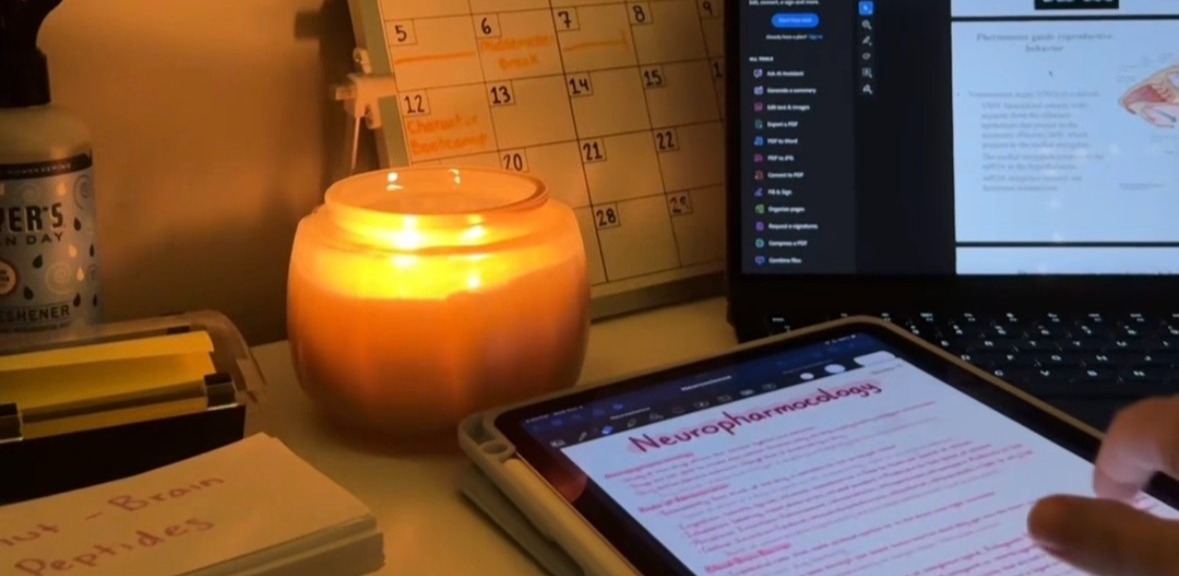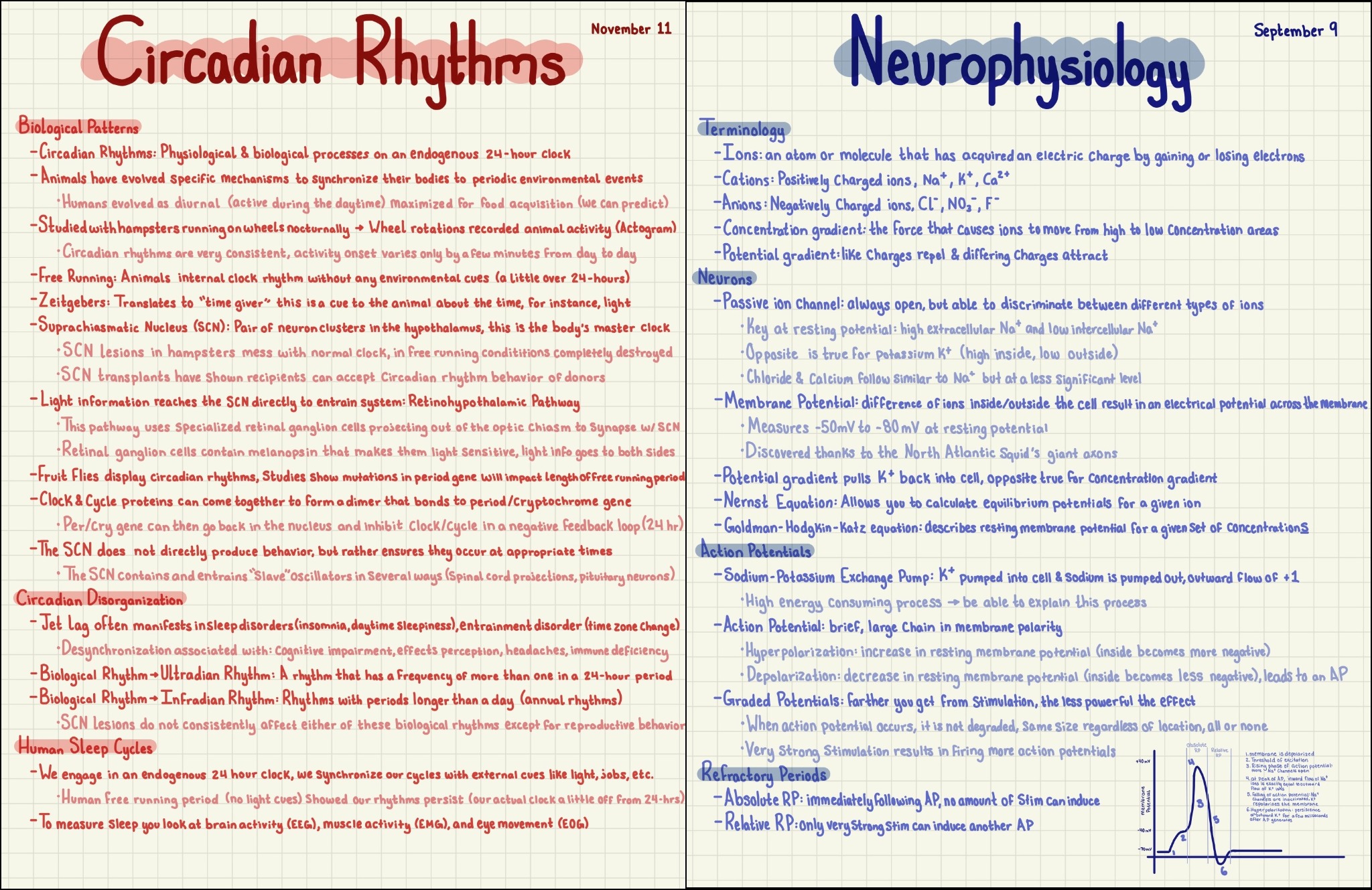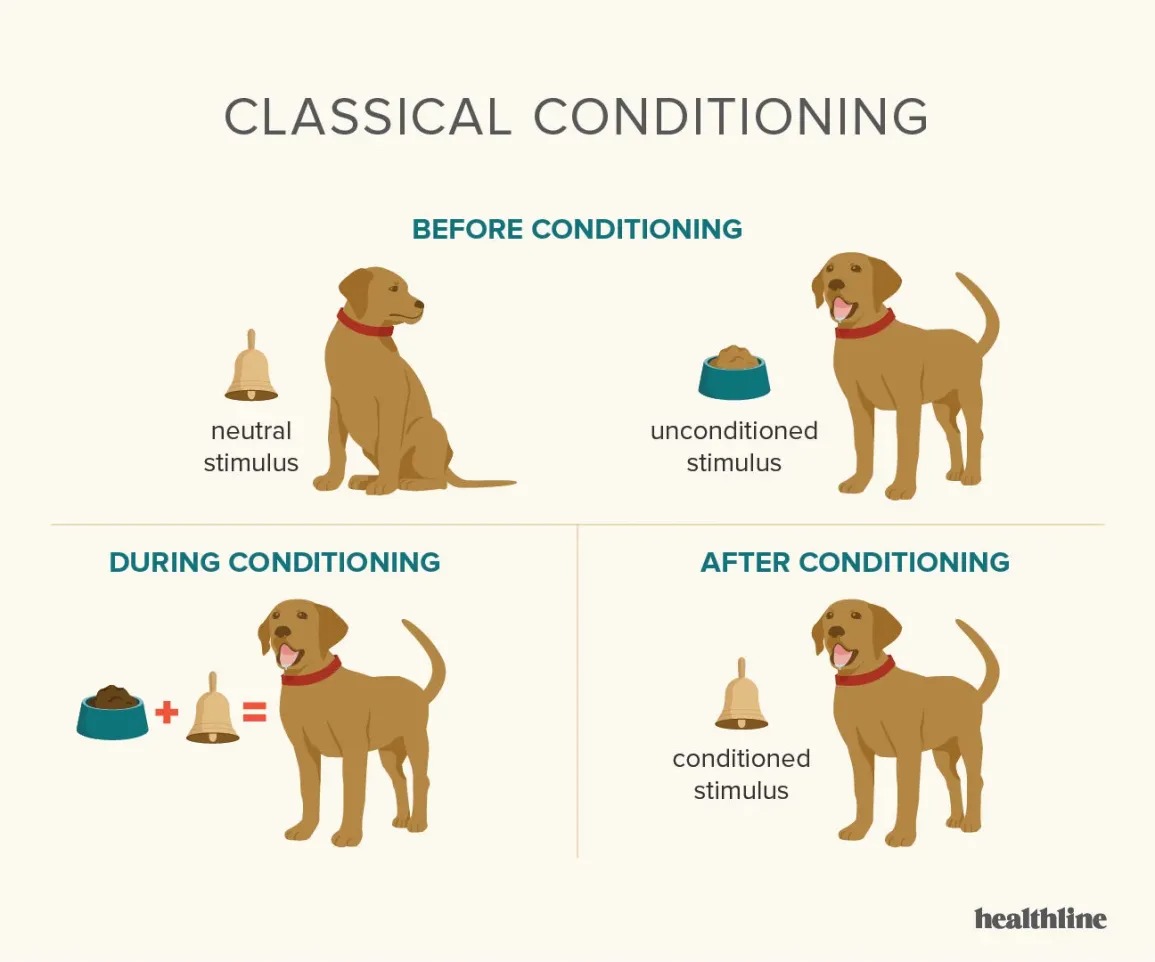
← Back
Study Hacks Every Student Should Use
As a psychology major, I love finding ways to trick my brain when studying. Over the years I have experimented with a variety of study strategies and have curated this list of my top five strategies that have time and time again proven to be winners.
1. Handwriting Notes
- There have been numerous studies over the years that have provided clear evidence that handwriting notes is more effective than typing notes. While I understand that typing notes is far more convenient (espeically as some professors lecture at speeds that can be hard to keep up with), I have found that particularly in my STEM based classes this method is extremely beneficial. If I commit to handwriting notes for a class, I typically use my iPad and Apple Pencil. I use a program called Goodnotes, which essentially gives me digital notebooks, filled blank pages of paper that I can write on. Regardless of how you choose to handwrite your notes, I think this is the best way to retain a lot of information thrown at you in bulk. If you want to read more about the science behind this I recommend The Learning Scientists blog by By Carolina Kuepper-Tetzel, where she breaks some of these studies down a little more.

How I lay out my handwritten notes
2. Flashcards for Everything
- Another way I study for big exams is to create handwritten flashcards on vocabulary for the unit. While I know there are a lot of great online tools for creating flashcards like Quizlet and Anki, I have found that writing them out myself helps me slow down and really process the information. On one side of the flashcard I will put the term or concept I am studying and on the other side, typically I will both provide an definition and apply it to something we learned in the unit. For instance, if I am creating a notecard on the Innervation Ratio of a muscle, the back of the flashcard would give the definition (the number of muscle fibers innervated by a single axon) as well as an example (eyes have small innervation ratios while leg muscles have large innervation ratios, as one axon is expected to control part of a larger movement). I have found adding an application beyond the definition helps me tremendously on exams, because most of the time professors don’t just want you to know the terms, they want you to know how the terms can be applied to other things we are learning.
3. Pomodoro Technique
- The Pomodoro Technique is another great go-to study method when you need to complete a large amount of work. The premise is simple, you do 25 minutes of focused studying, followed by a 5 minute break. I typically repeat this cycle four times and then take a longer 30 minute break. This method of breaking up your studying prevents you from burning out after just an hour or two of studying. I also think it can be important how you use your breaks. I find it most effective to step outside, grab a snack, and to stretch a little on these breaks.
4. Classical Conditioning
- Classical conditioning, first described by Ivan Pavlov in the late 1800s, is a type of learning where a neutral stimulus becomes associated with a meaningful one, eventually triggering a learned response. How does this relate to studying you may ask? If you consistently pair a specific cue (orange-flavored gum for example) with your study sessions, your brain starts to link that cue with focus and information retention. When you go to take the test, using that same cue can help bring the material back to the surface more easily. And it doesn’t have to be gum! You can use any consistent stimulus: a particular perfume, the same hoodie, a certain tea or coffee, really anything you choose to associate with “study mode.”

Classical Conditioning Explained
5. Morning Study Sessions
- My final study tip is to always review the information the morning of the exam. It’s much better to wake up early and study than to stay up late cramming and walk into the test exhausted. When your body is tired you need to listen to it. I also think that waking up early before an exam gives you time for your brain to wake up. You can eat breakfast, take your time getting ready, and feel fully awake and alert by the time the test rolls around. If you’re someone who tends to procrastinate in the evenings or gets drained by afternoon classes, adding even a small morning study routine can totally change your confidence walking into a morning exam.
Studying shouldn’t feel impossible. These strategies are meant to help you manage the stress of exam seasons. Whether you try one of these tips or all of them, I hope they help you feel more confident and prepared as you move through your courses. Good luck and happy studying!
Additional Resources to Better Understand Study Strategies:
Post a comment